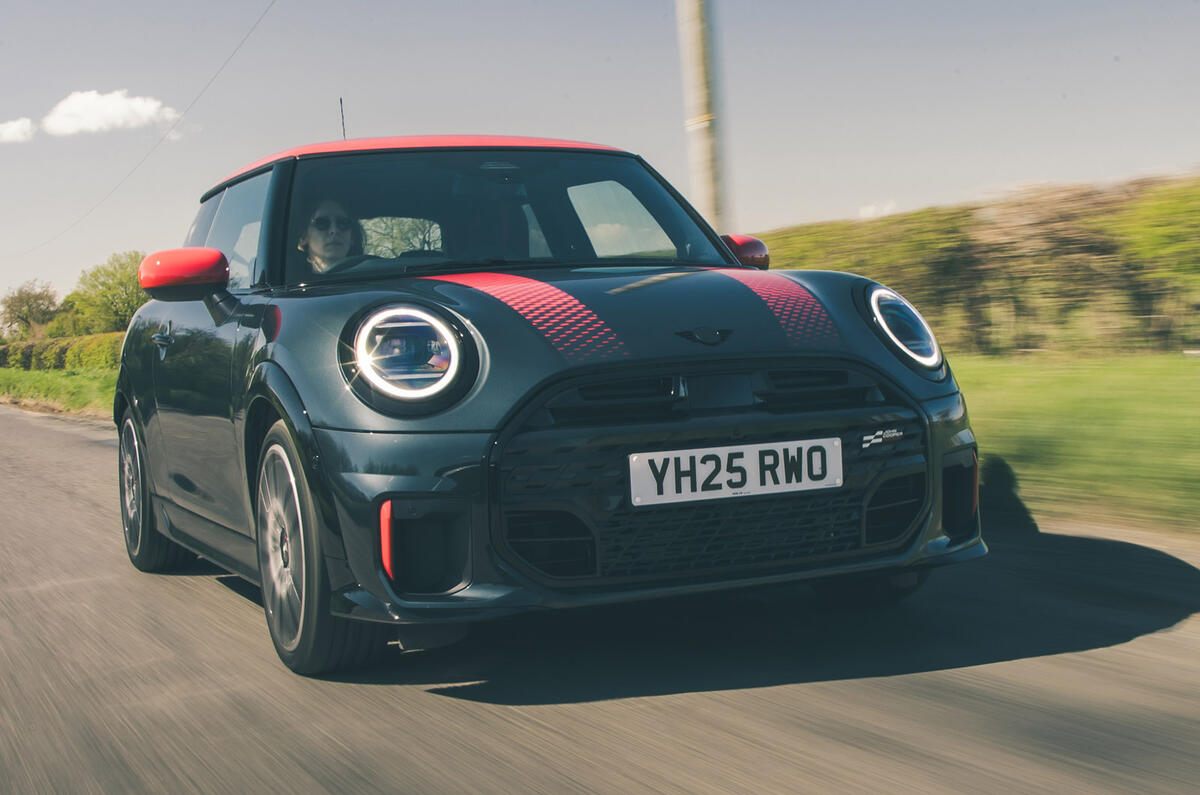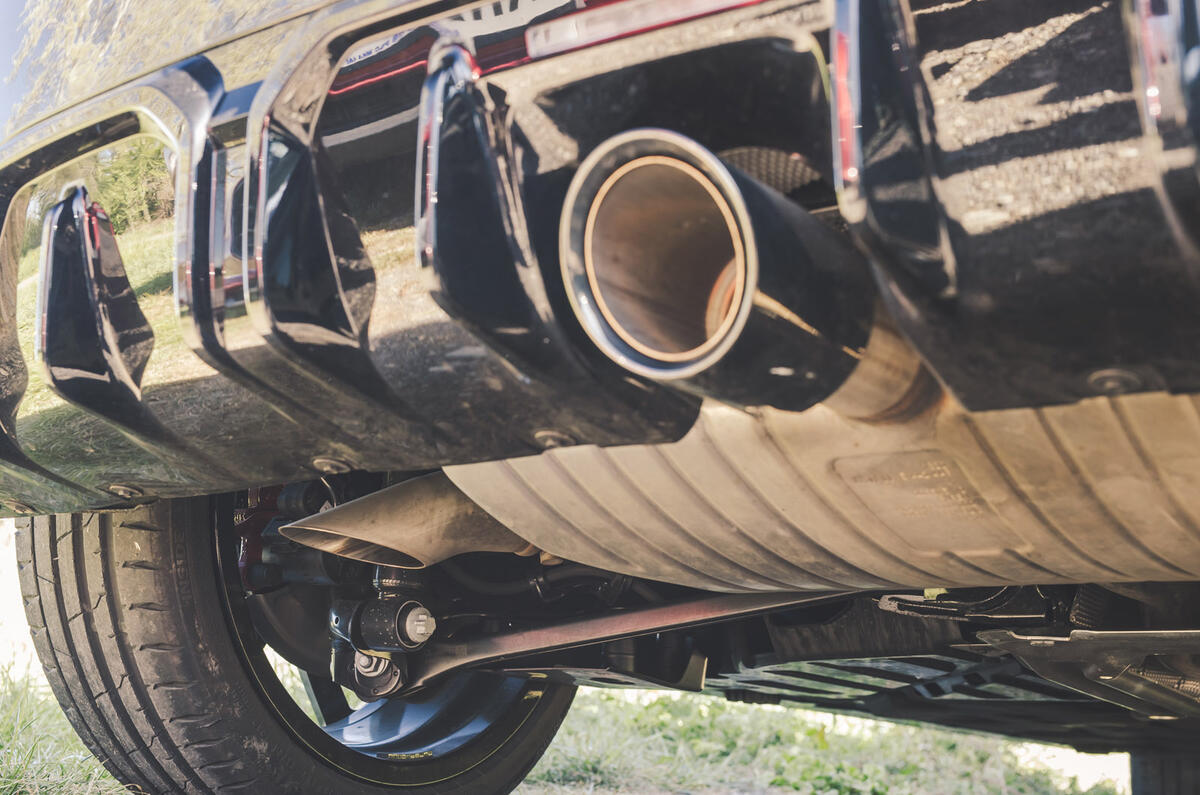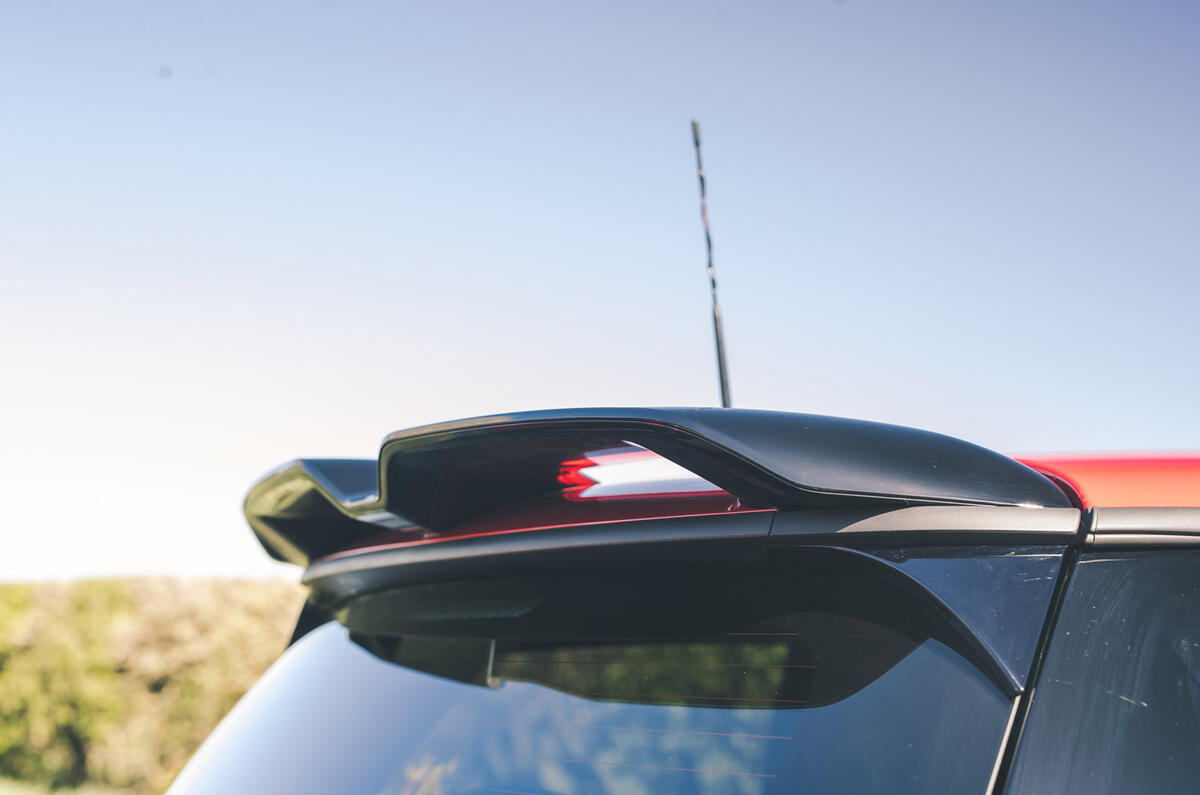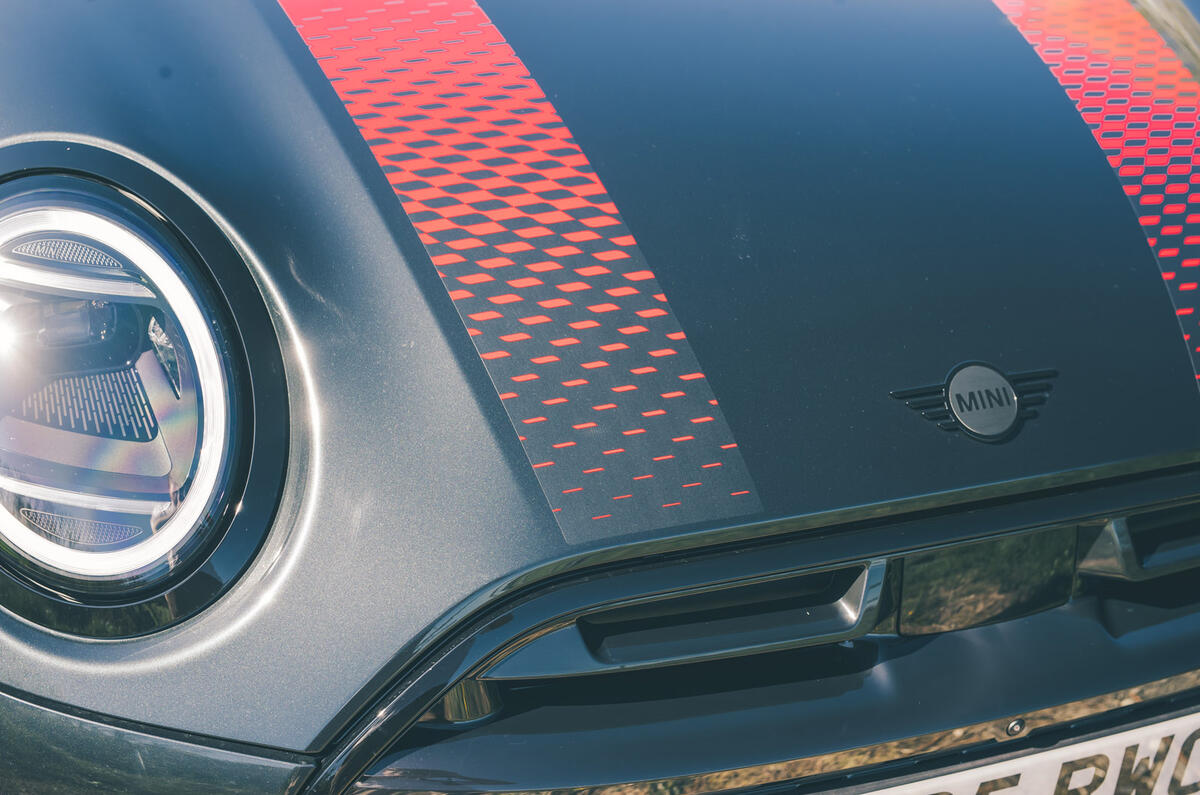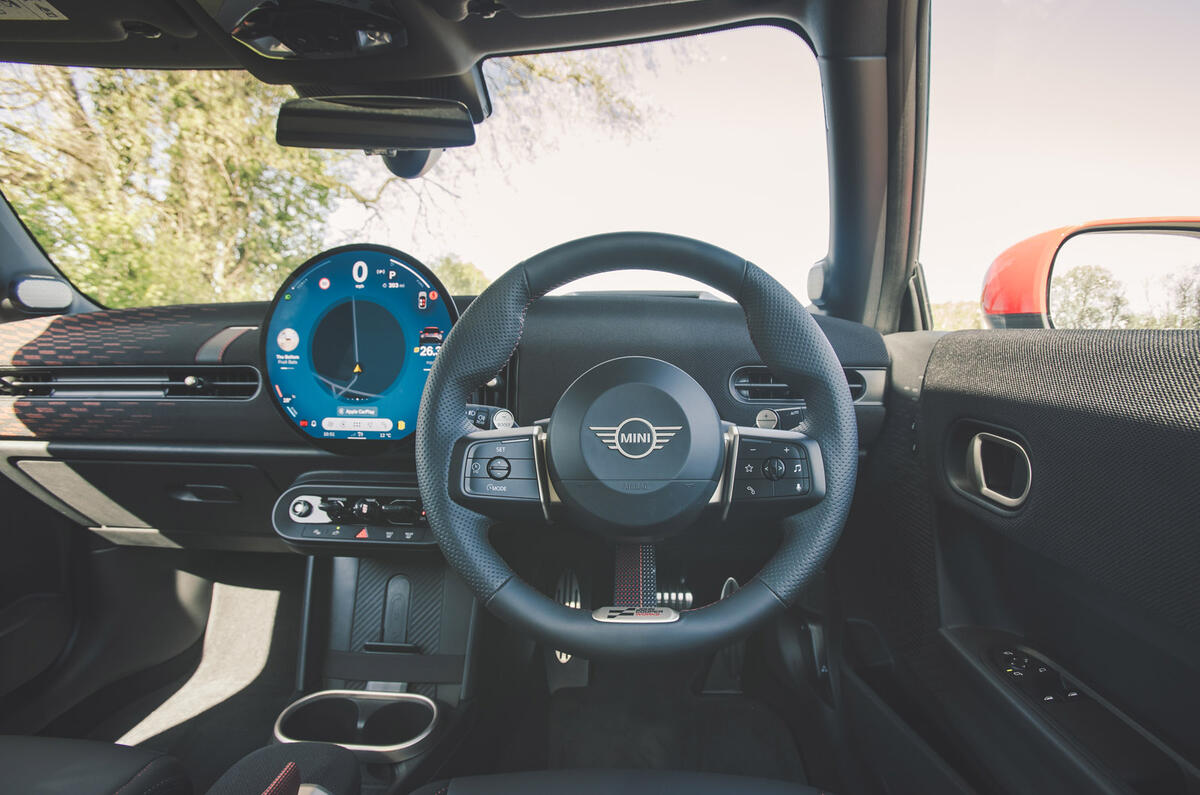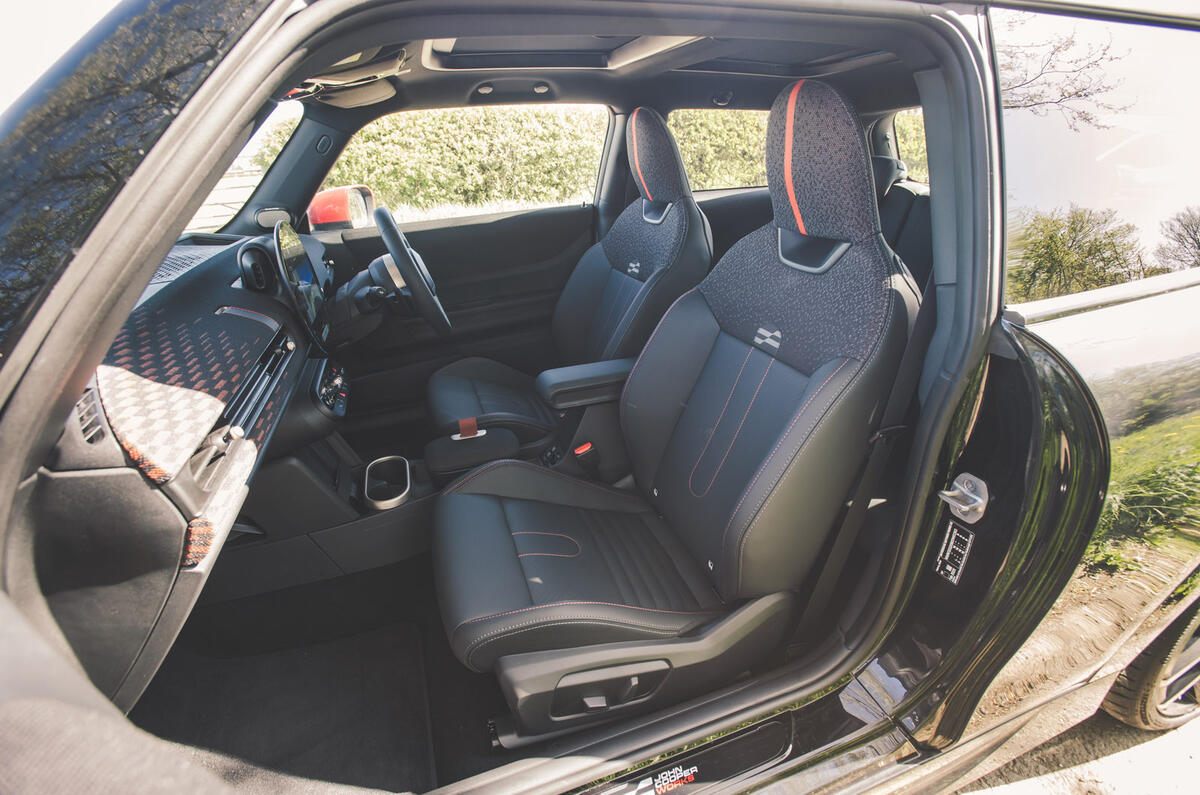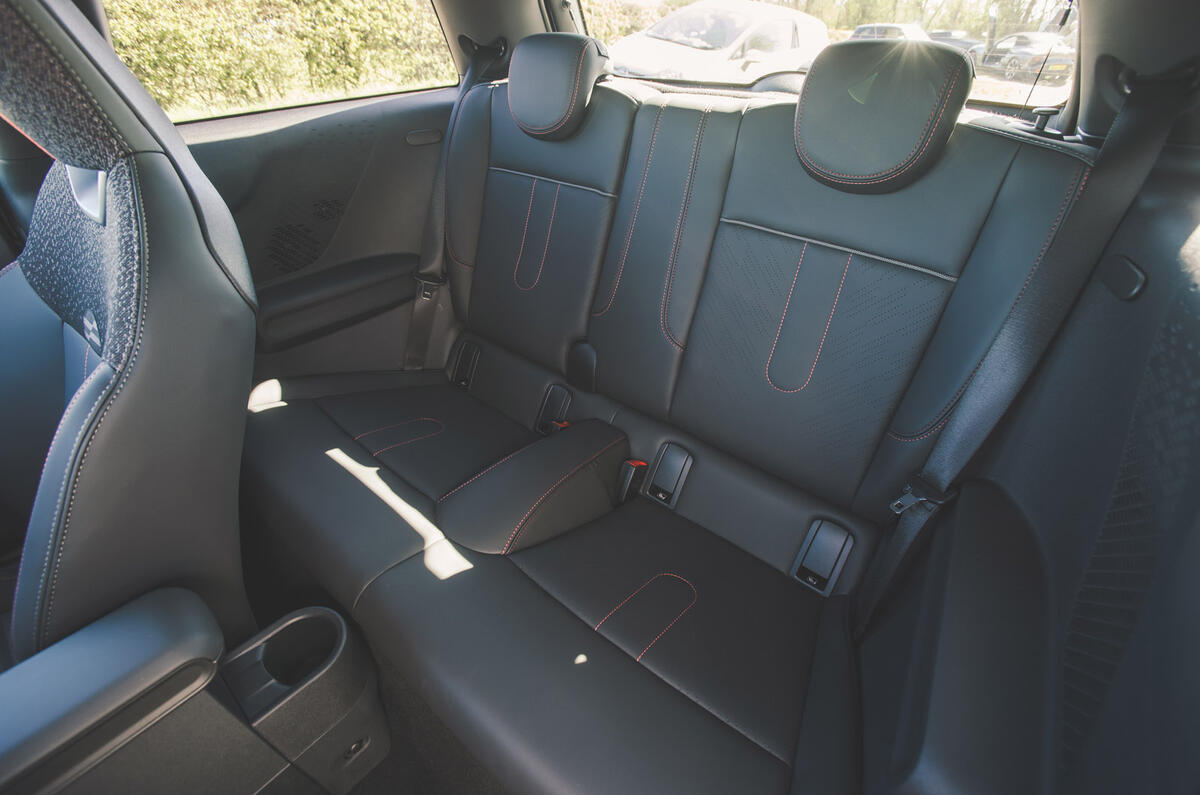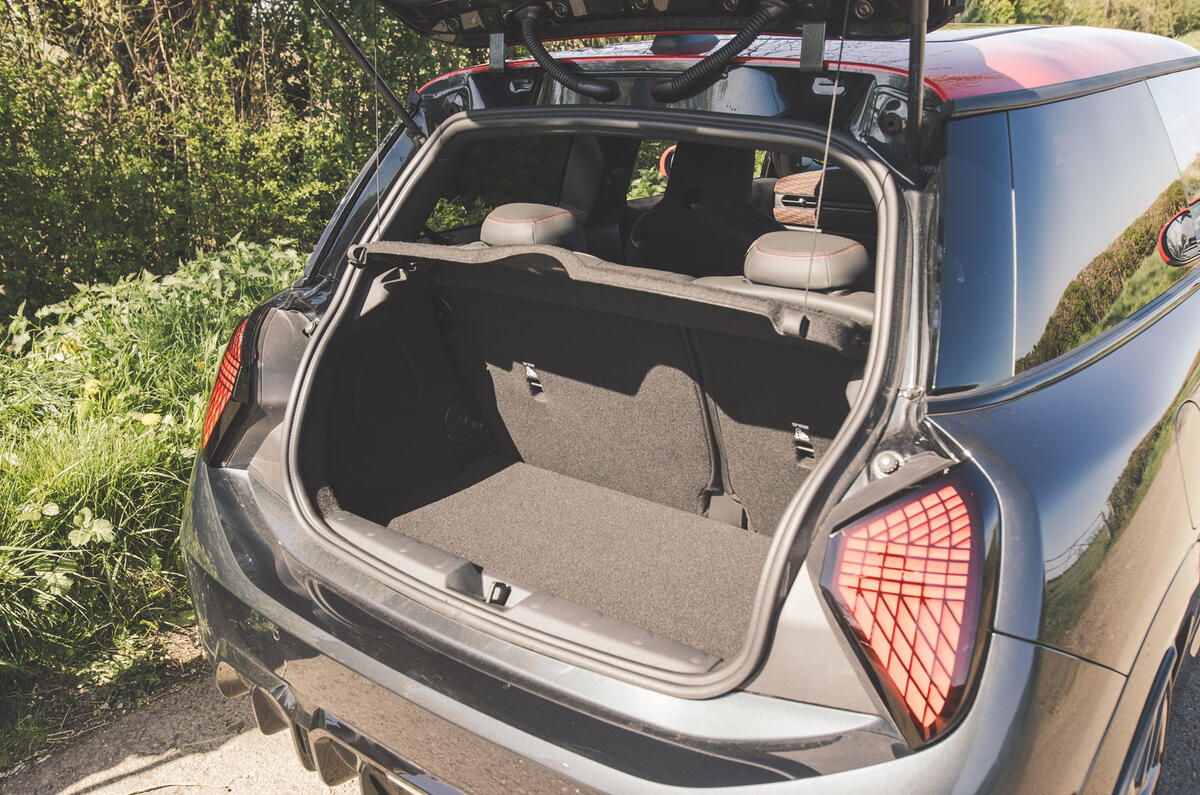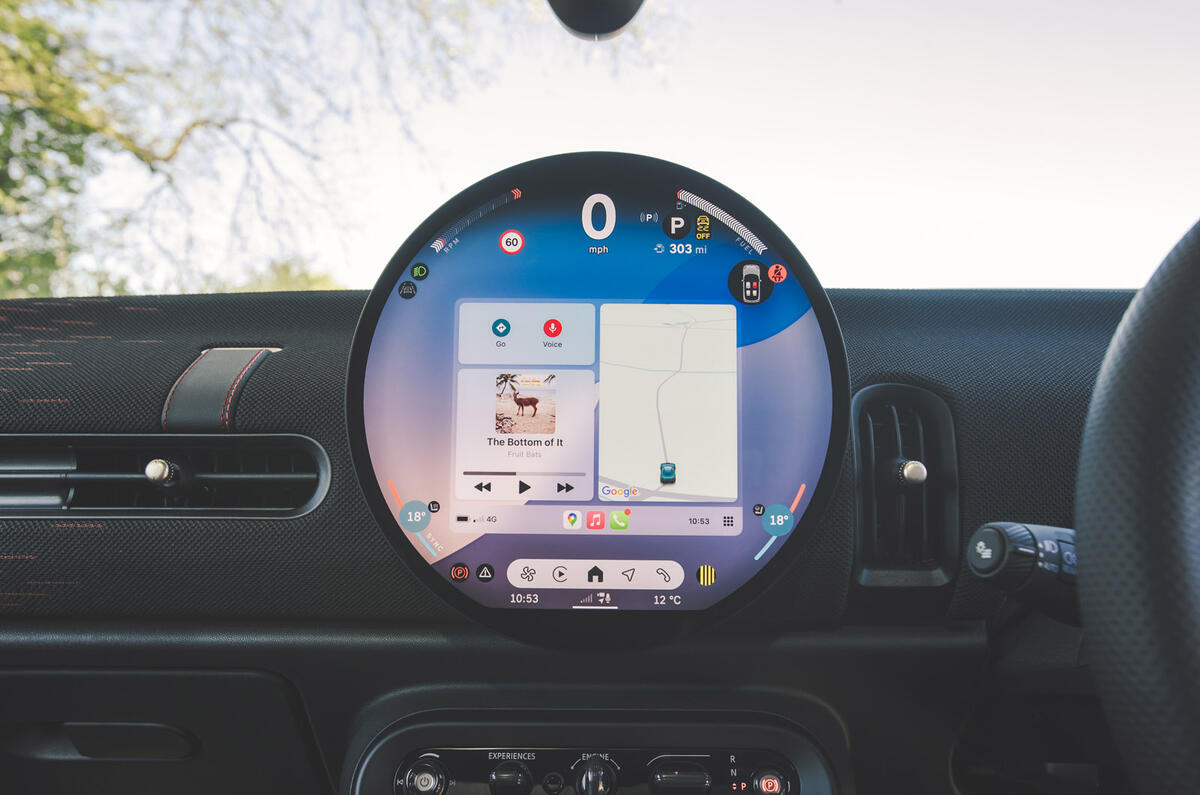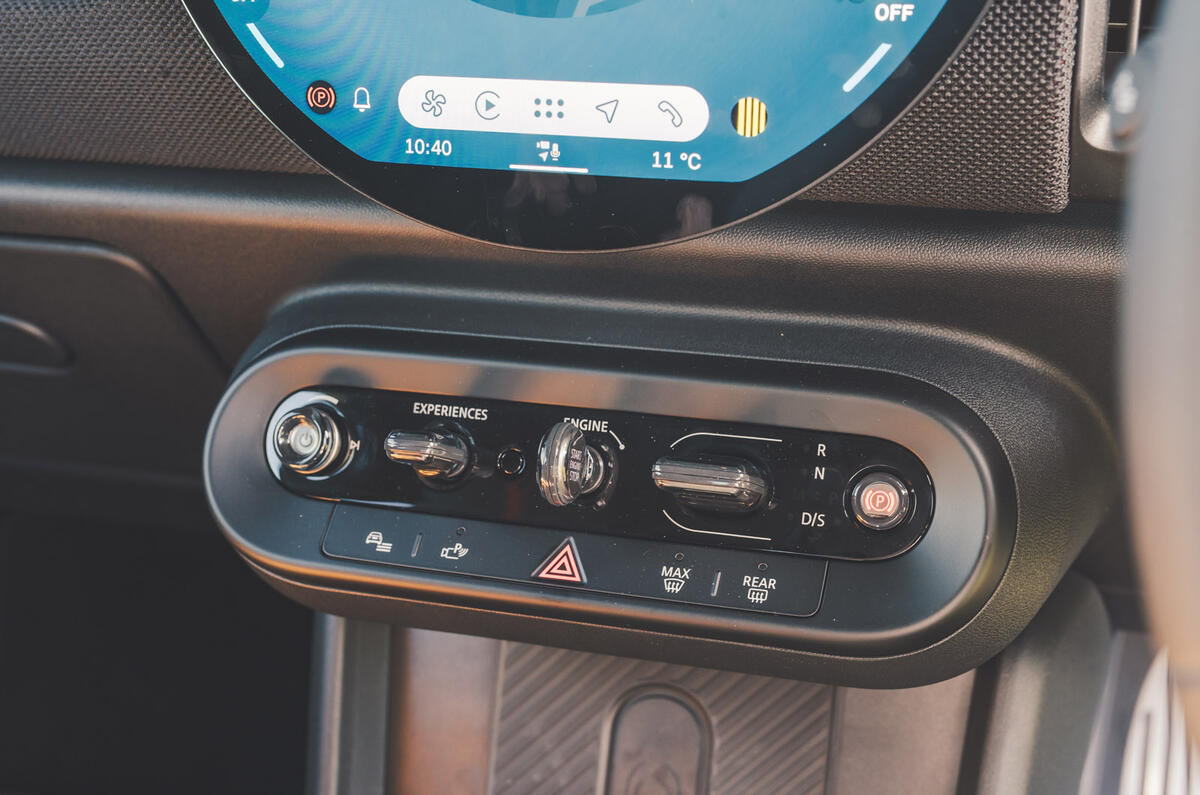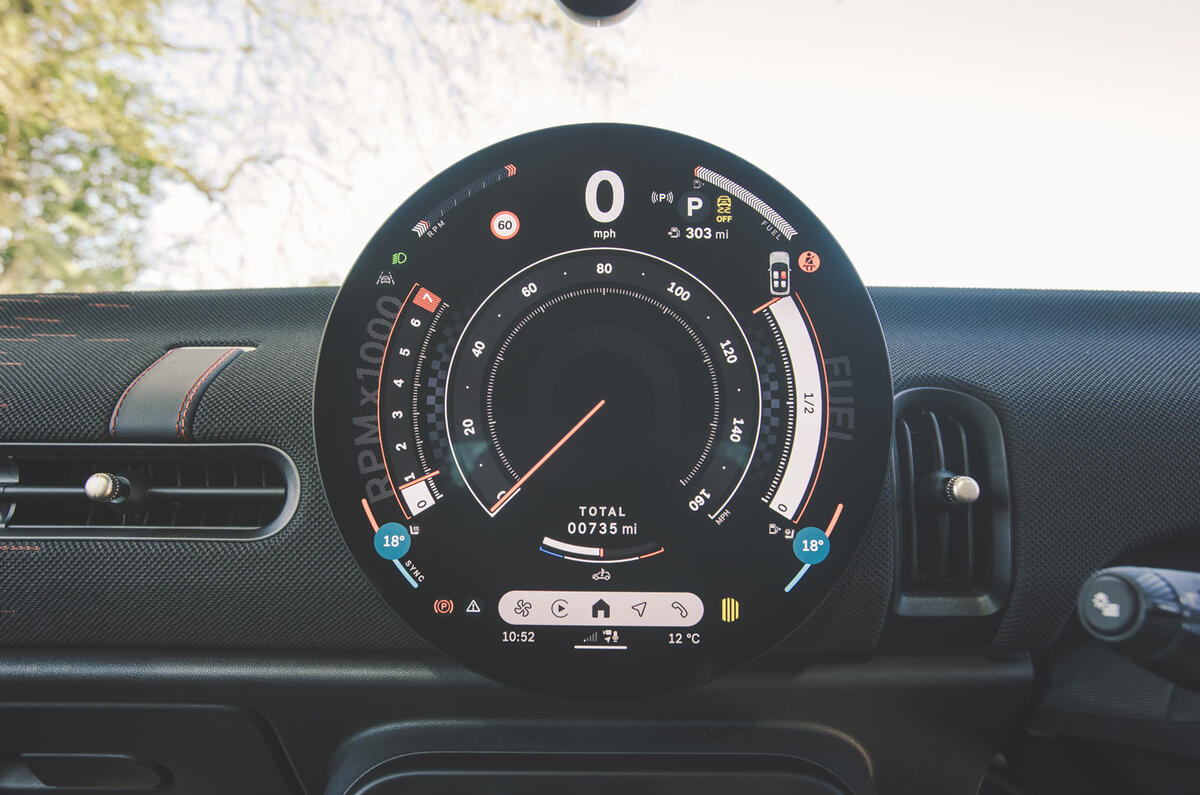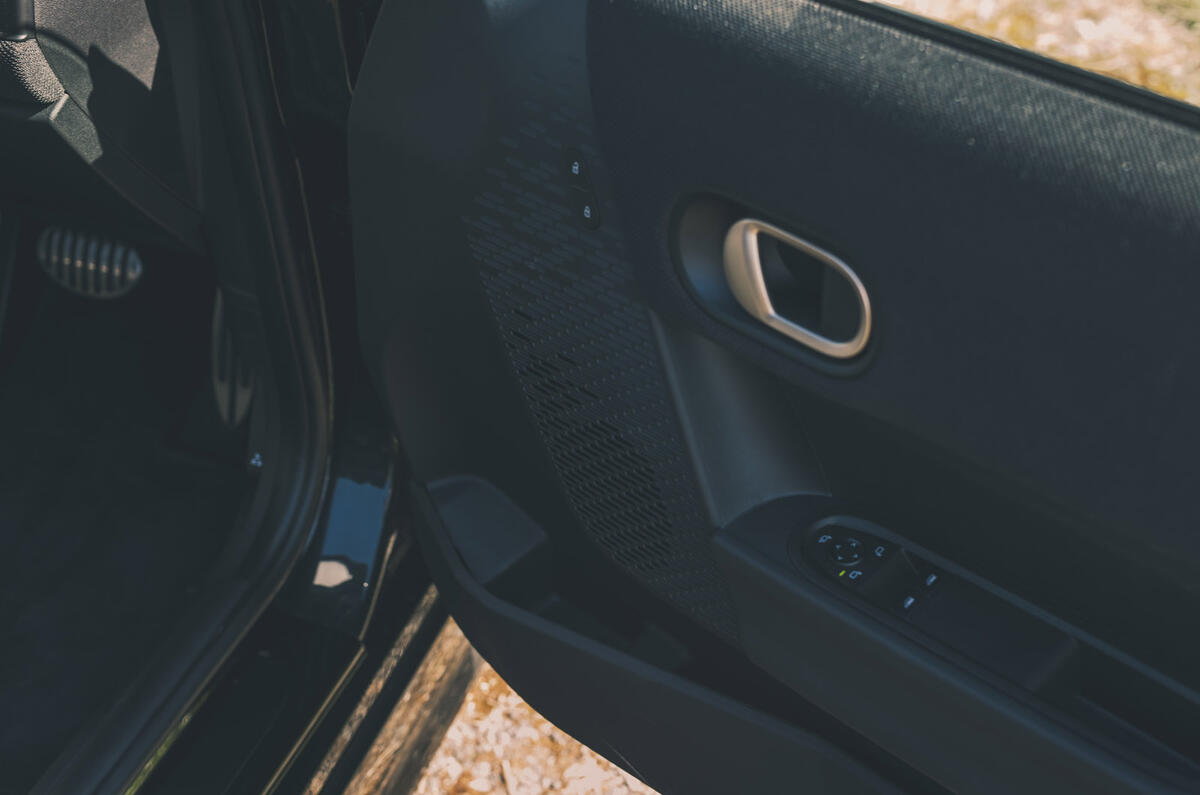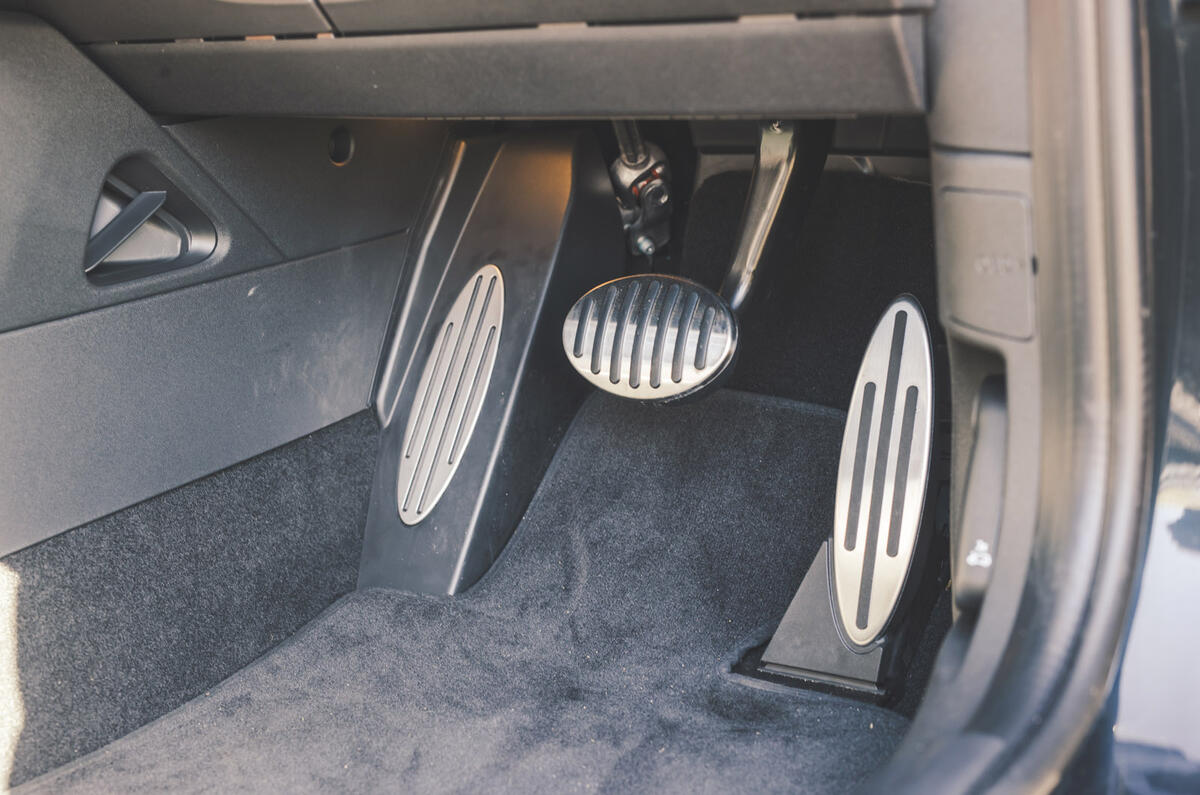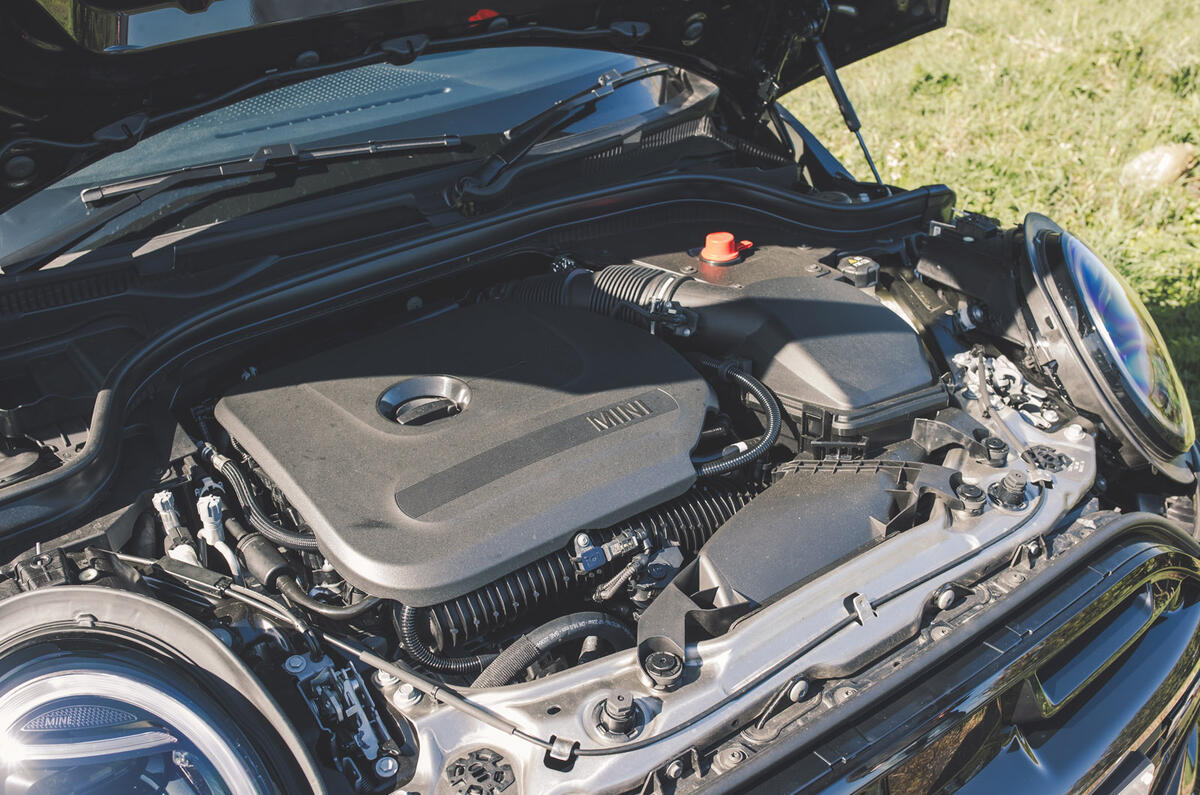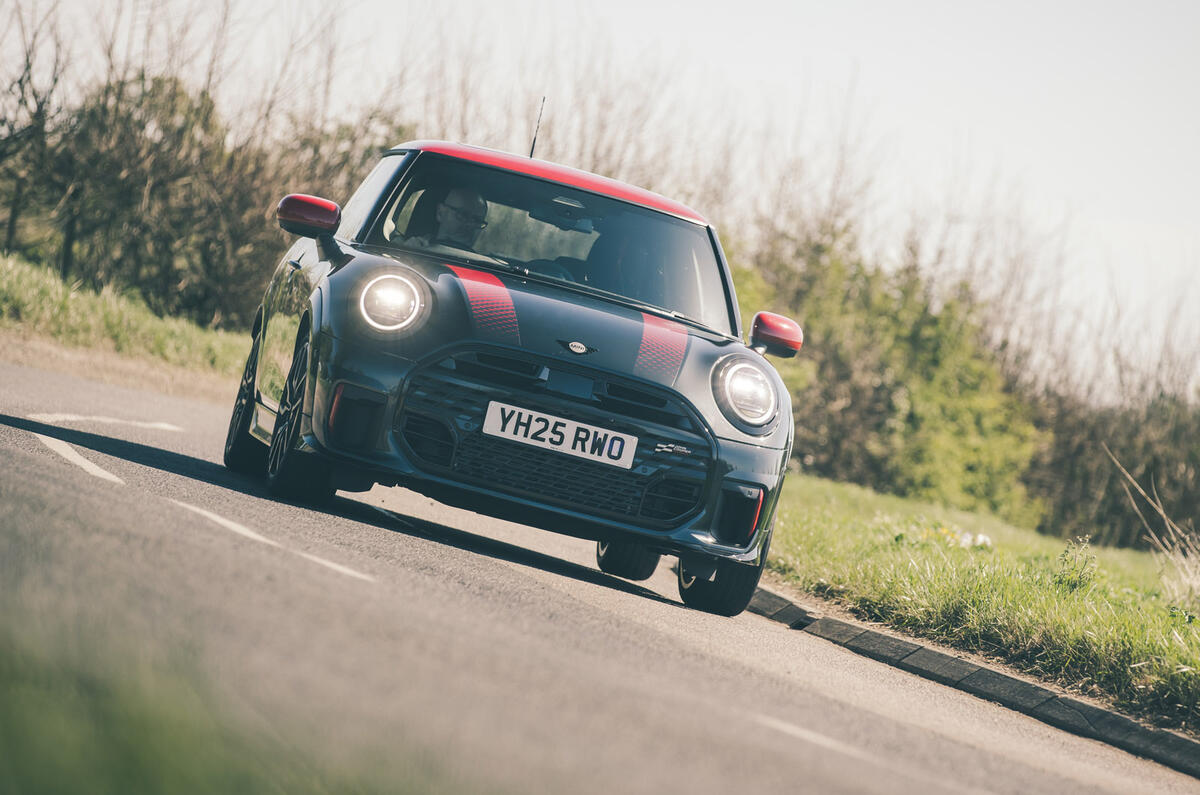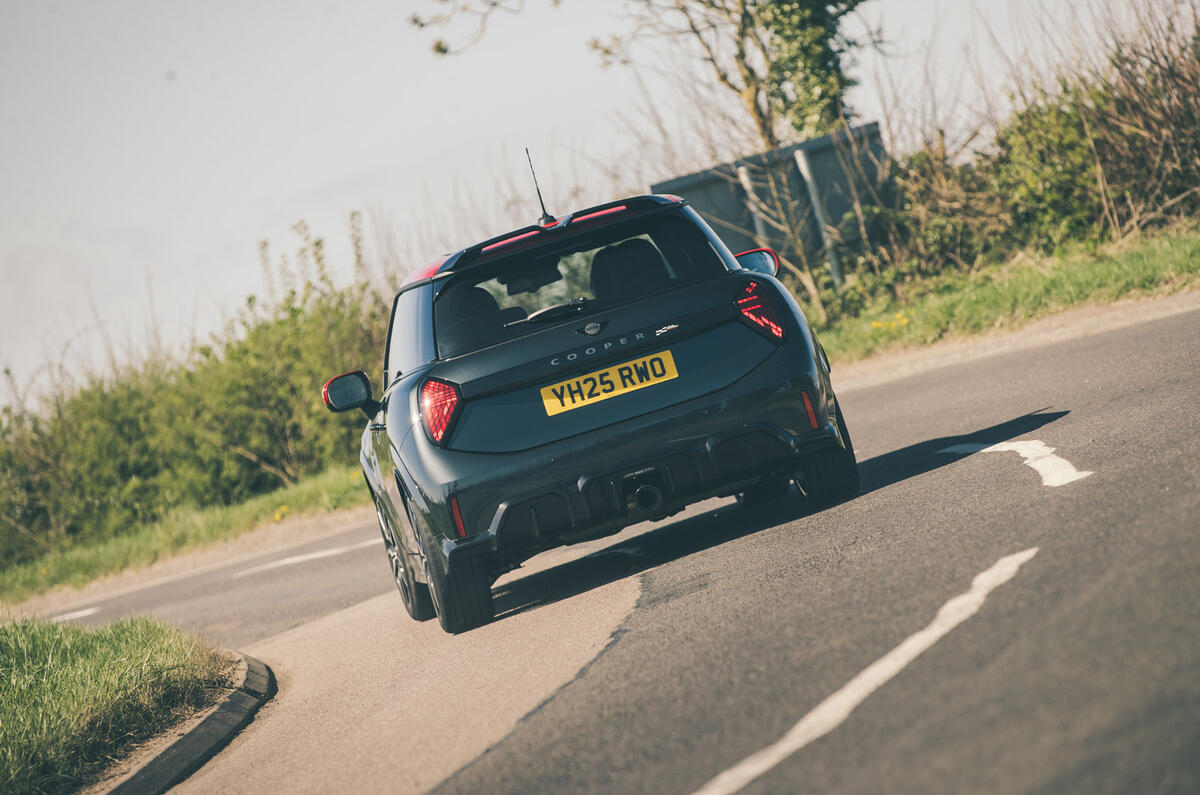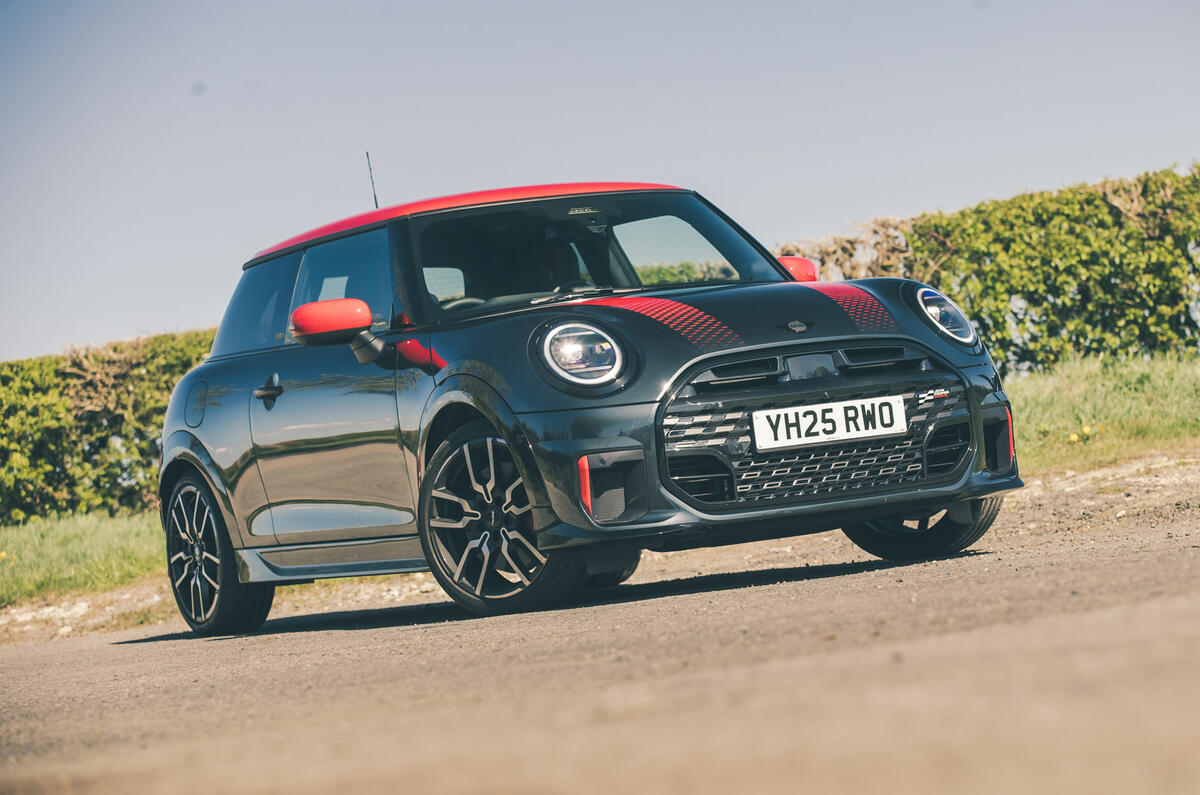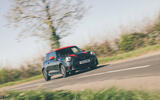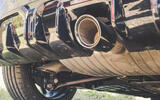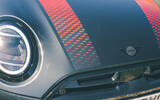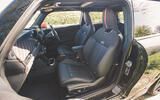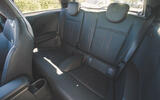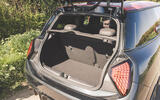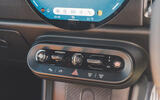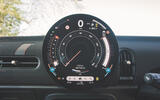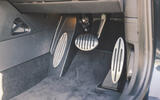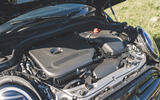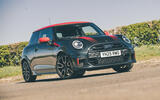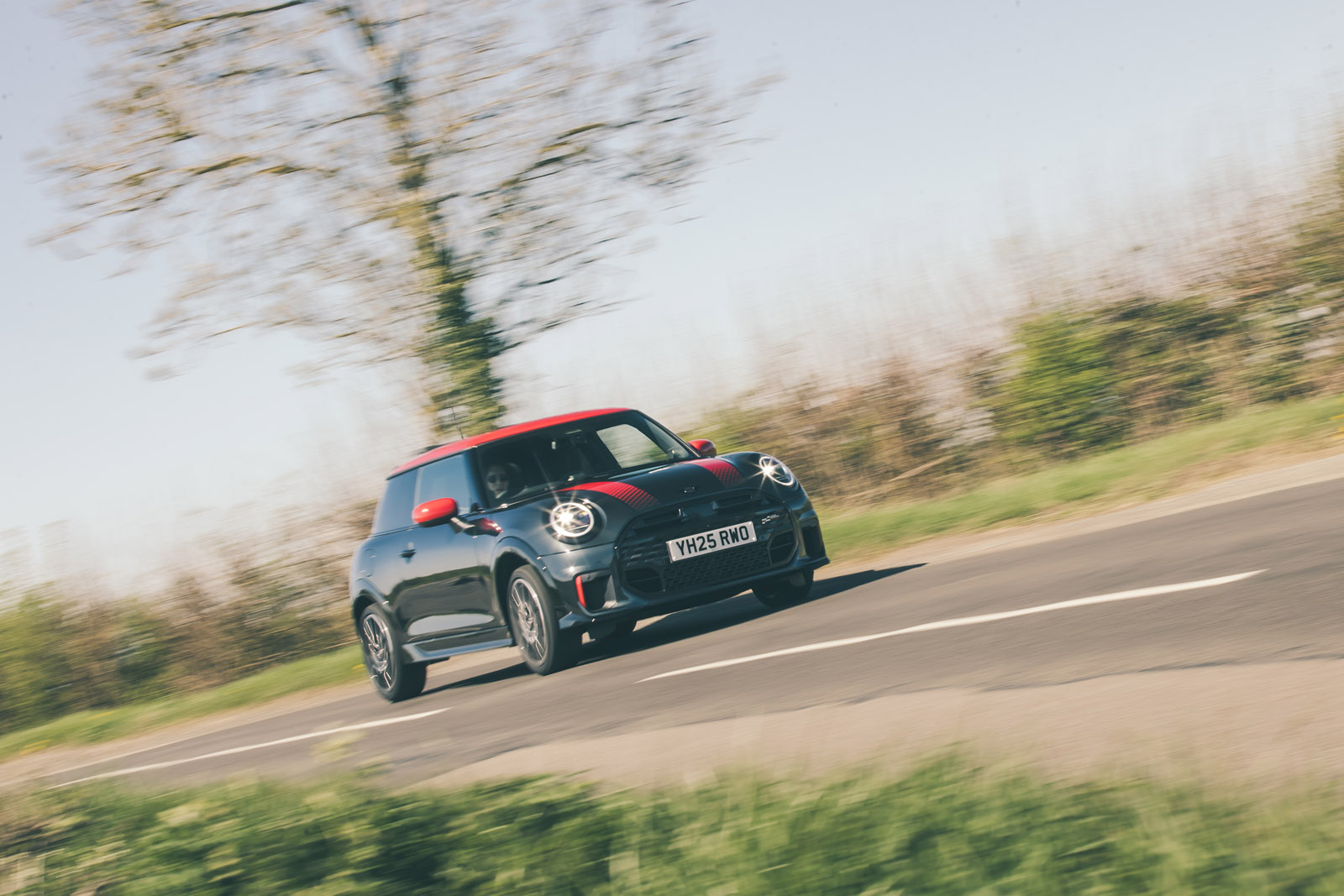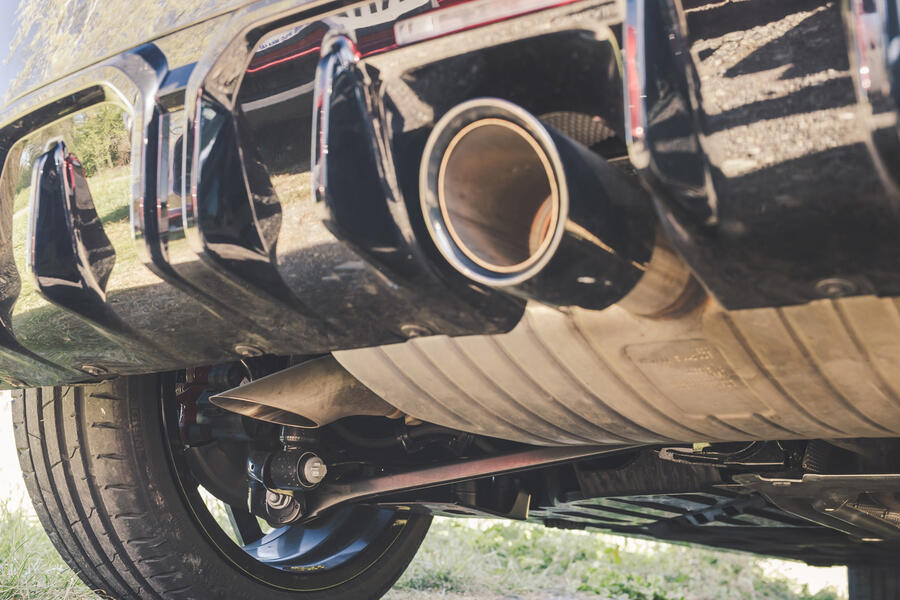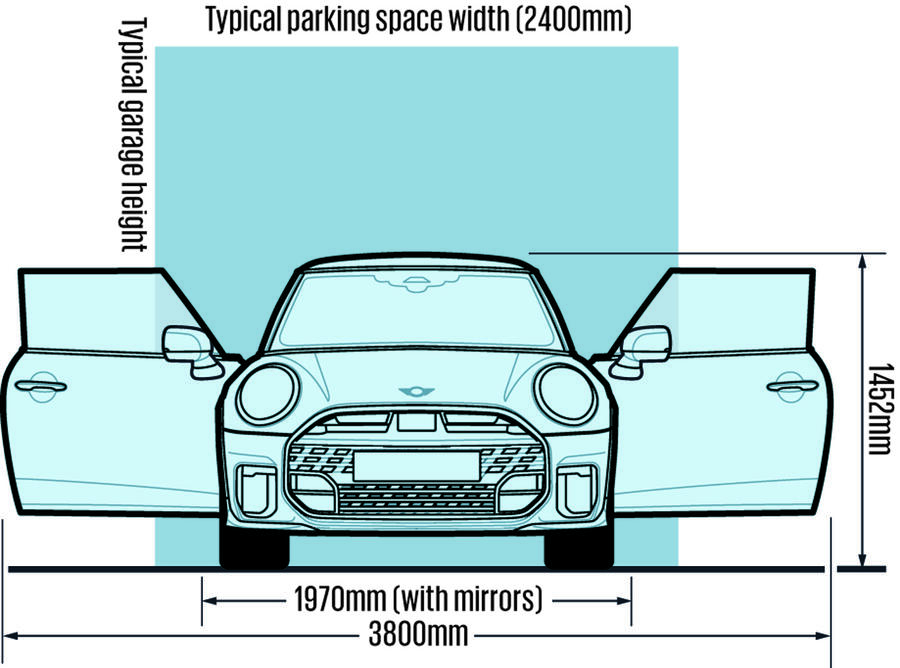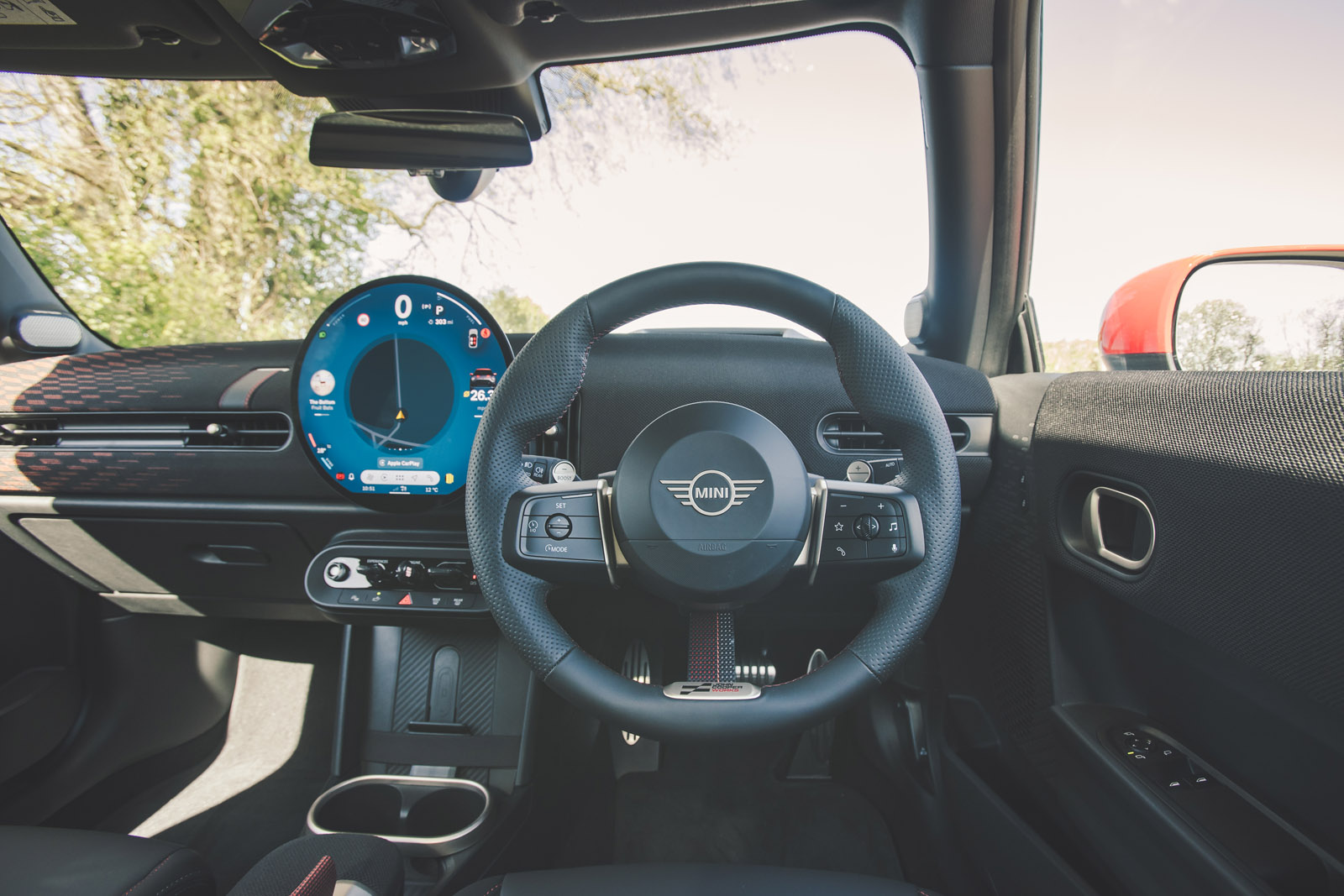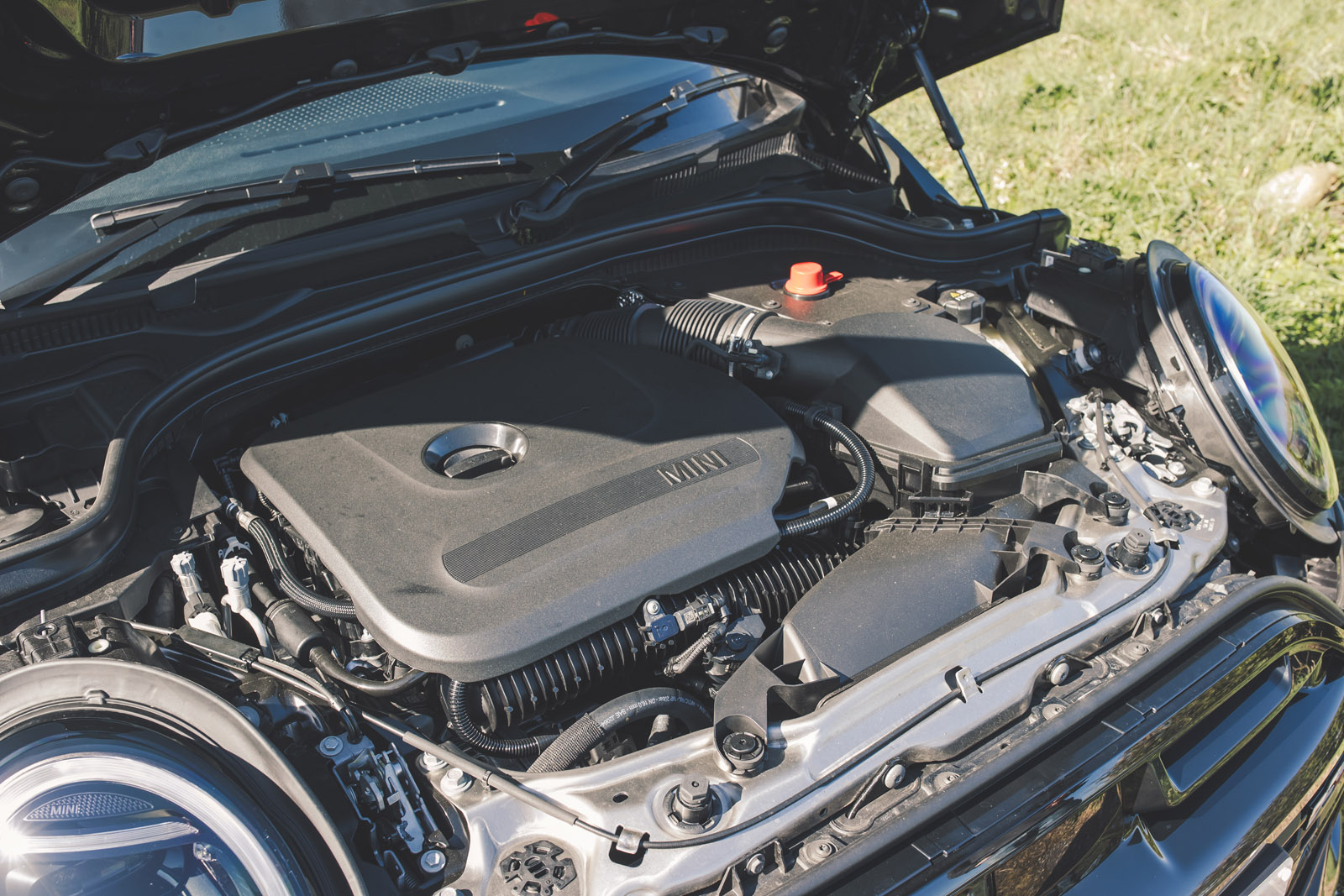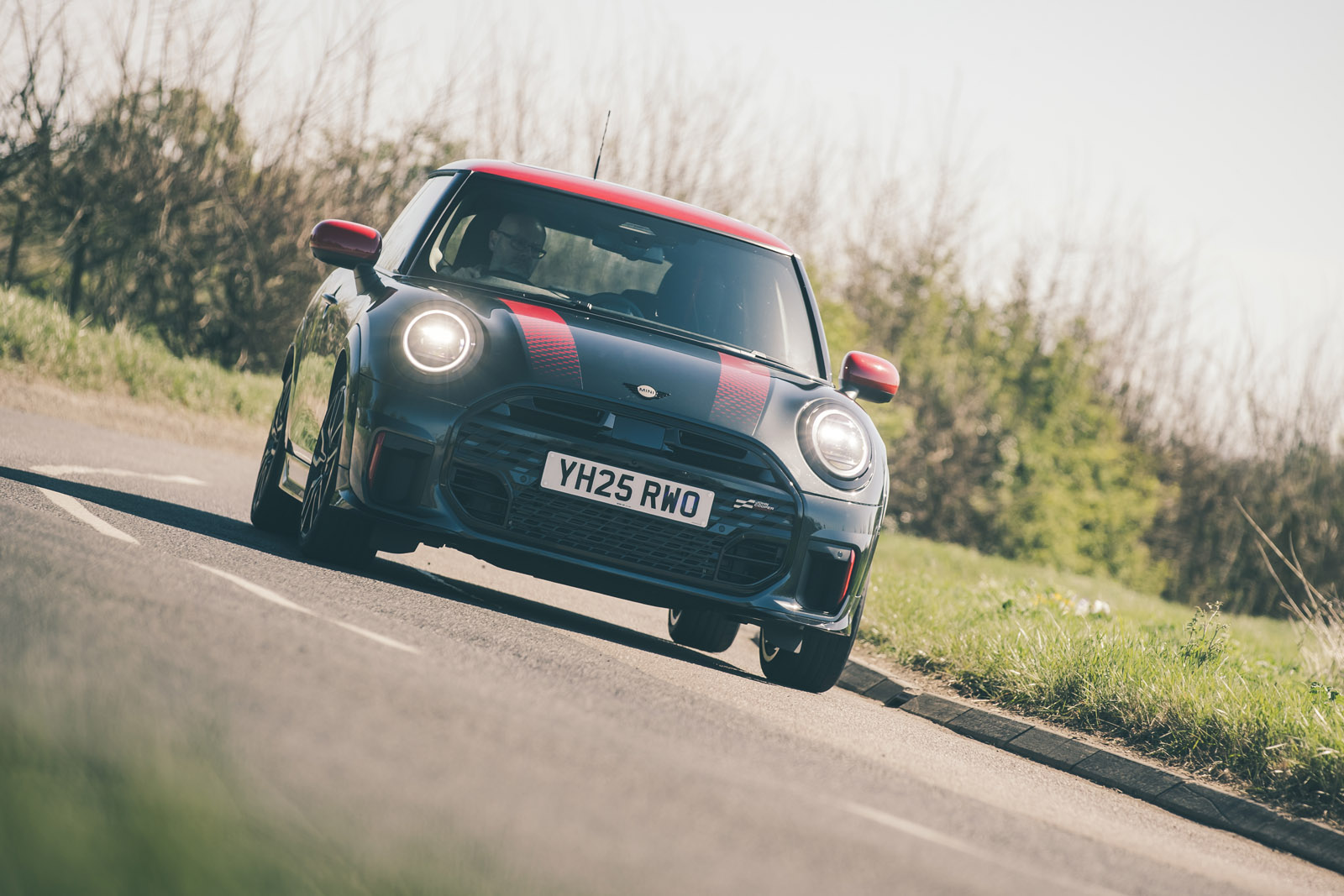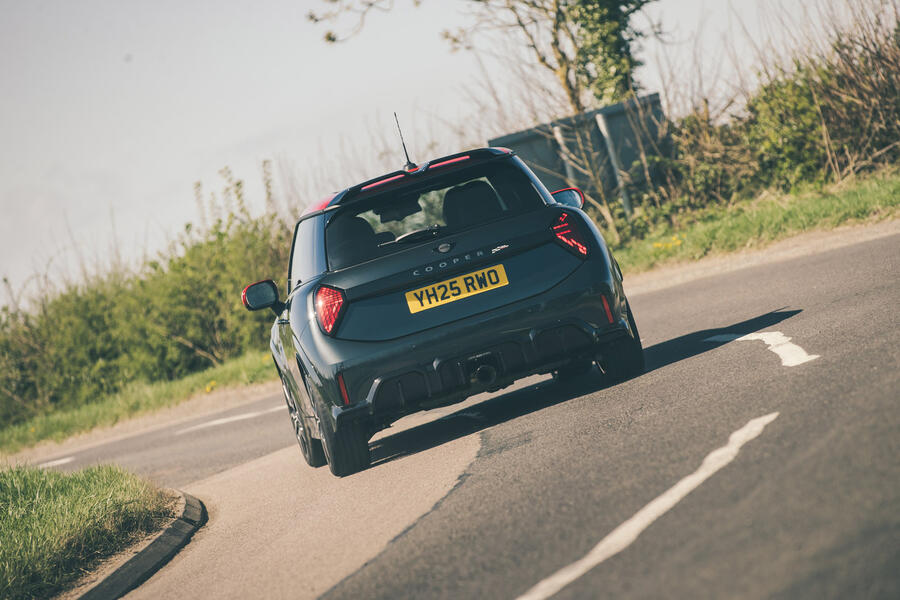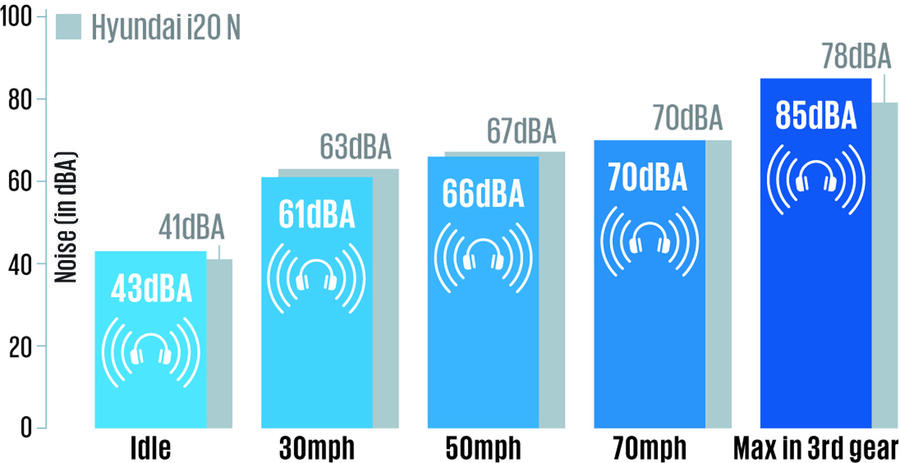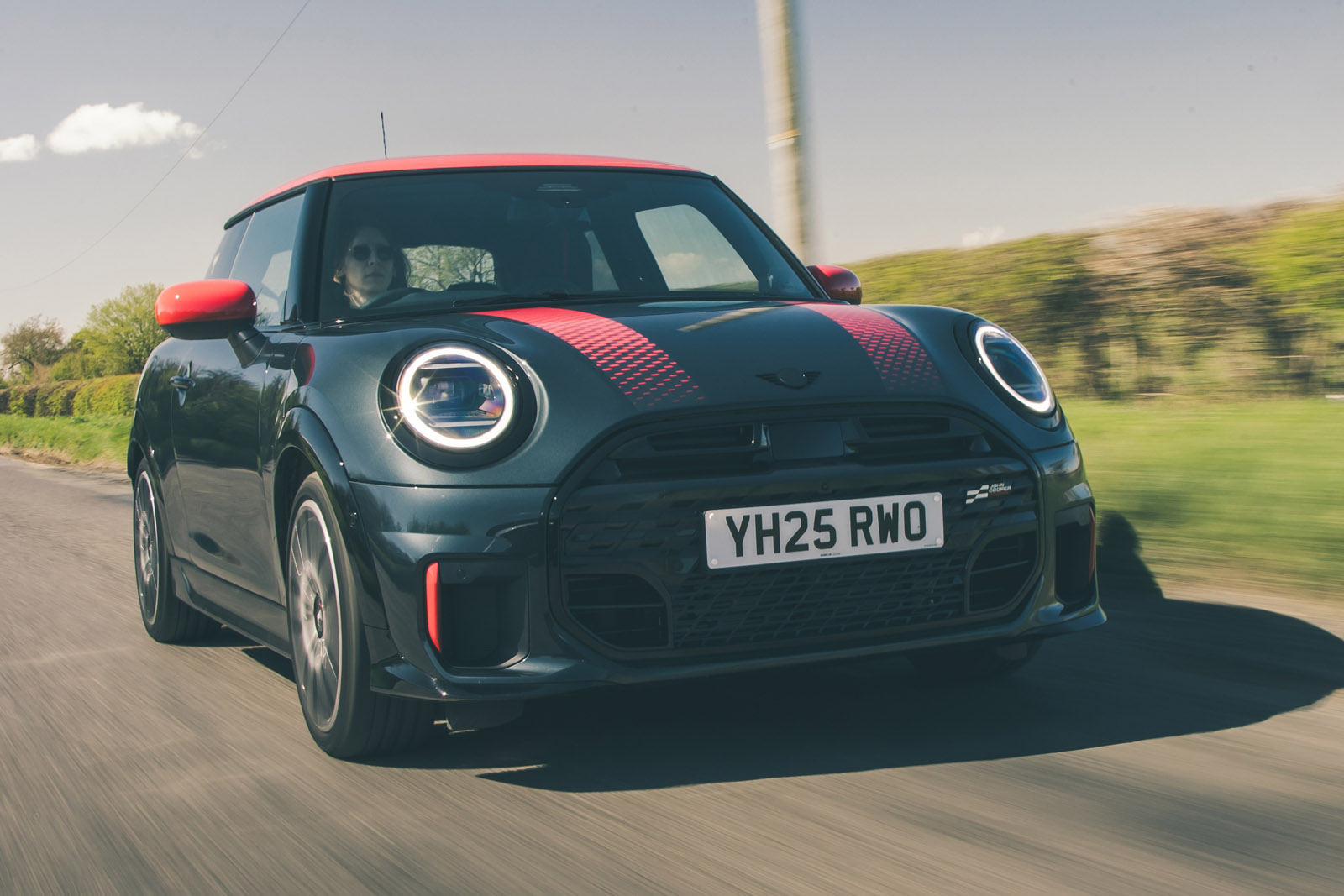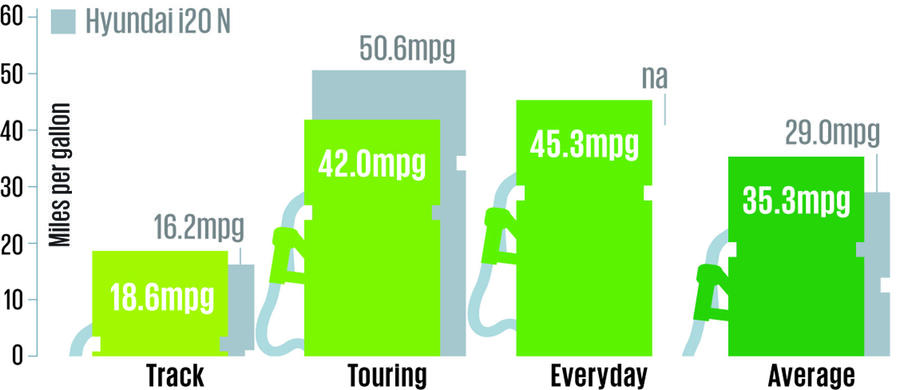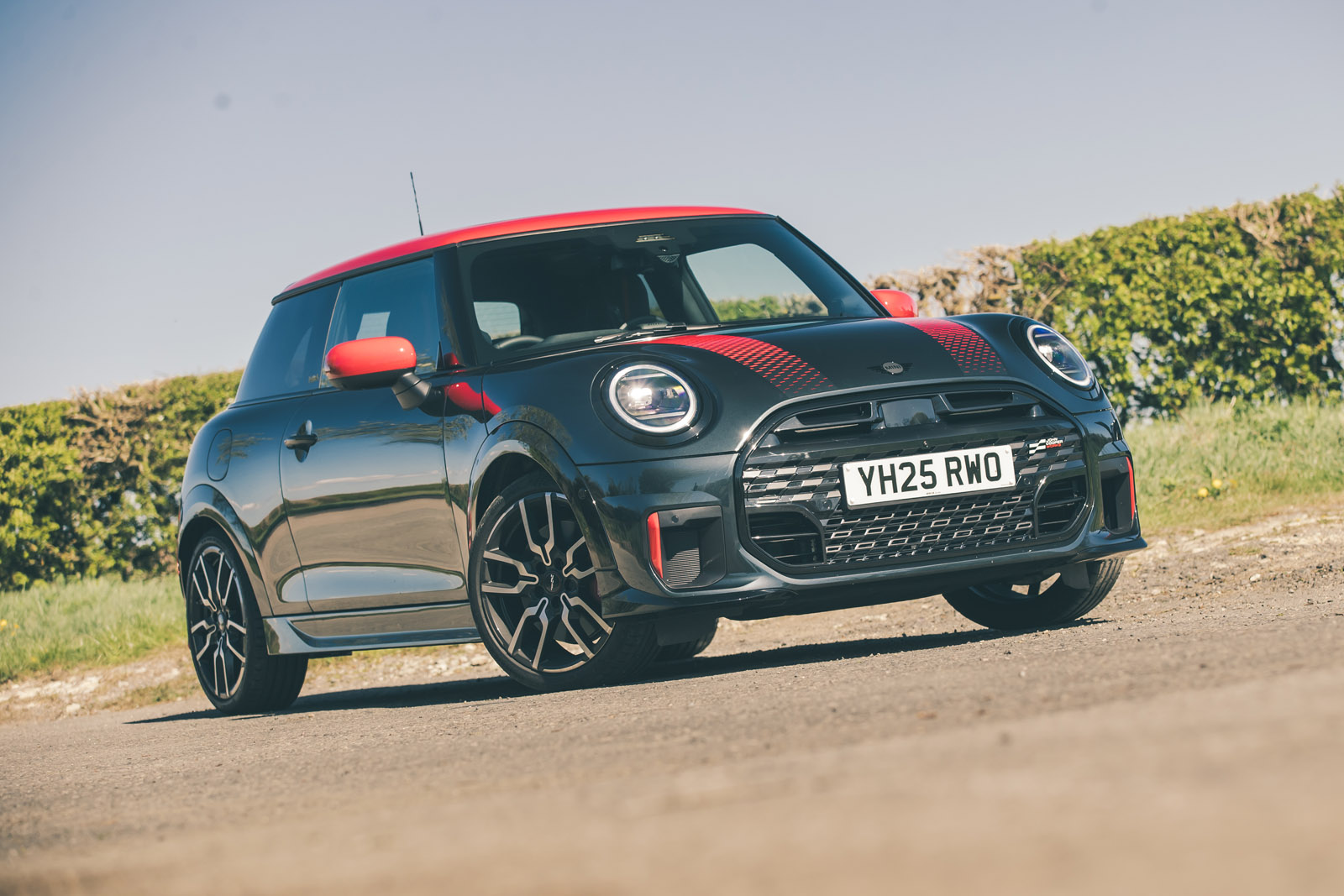If you materialised into the driver’s seat of the new Mini JCW without seeing the exhaust, you would have no way of knowing which version you were in. The copious red accents, JCW insignias and perforated leather steering wheel are shared with the Sport trim of the standard car. And where previous generations might have offered a set of more serious bucket seats, the new JCW simply sticks with the standard items.
While the lack of differentiation from a normal Cooper is certainly disappointing, that is not to say this interior is devoid of charm or purpose, because this is one of the most distinctive supermini interiors around.
Opening the long front door somehow adds a little sense of occasion – the Mini Cooper is one of the last remaining three-door hatchbacks. If you’re tall, it’s also refreshing to get into a small car without the B-pillar getting in the way.
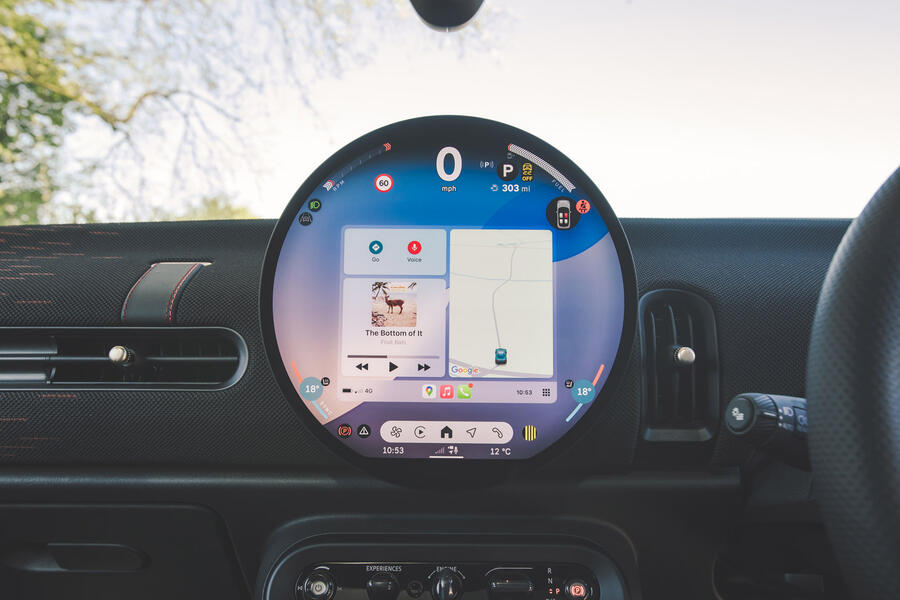
As with the previous generation, you can sit incredibly low for a front-wheel-drive hatchback. The Alpine A290’s and Toyota GR Yaris’s seats seem perched by comparison. The seats themselves feel a little de-contented, mind. There’s no more pull-out thigh bolster, and unless you spec the electrically adjustable memory seats (as part of the expensive Level 3 package), you don’t even get adjustable lumbar support or cushion angle. They are comfortable enough but feel a little flat, and the amount of lateral support is only adequate.
Since the latest Mini Countryman was launched in 2024, we have had some time to get used to Mini’s current style and control layout, but they remain divisive. Purely as a design exercise, the simple dashboard with a large round touchscreen and a minimal button panel is an inspired reinterpretation of the classic Mini’s basic dashboard and central speedometer.
In a modern car, there are many more functions to control than in the 1950s original, however. Squeezing a speedometer, tachometer, climate controls, warning lights and shortcut buttons, as well as navigation, media and the trip computer, plus a few more things, onto the 9.4in screen in a way that makes all these functions easily accessible at all times proved beyond Mini’s user interface designers.
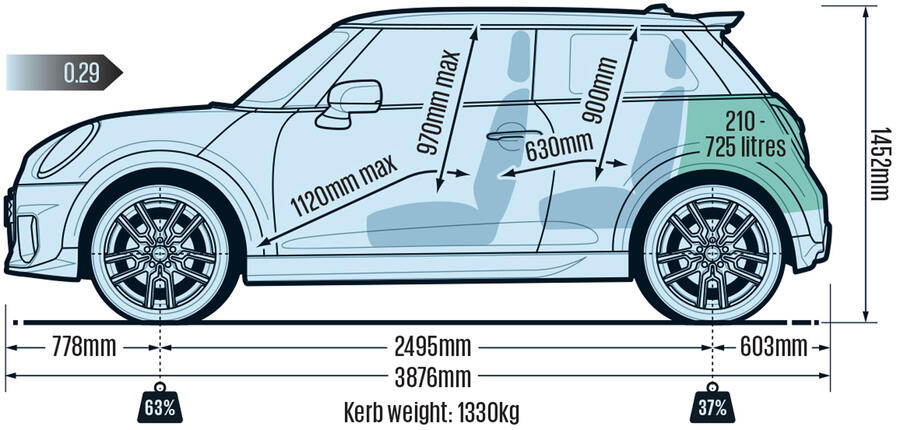
The graphics certainly look characterful, unique to Mini and therefore quite attractive. And at least the climate temperature controls and heated seats buttons are permanently displayed. It’s also possible to configure some shortcuts, but you’re quite limited in which functions you can map to them, and you have to log in with a Mini ID for this functionality to be enabled. This feels like a slightly cynical way for BMW to coerce you into giving up your data.
What should be simple actions like adjusting the screen brightness and turning off the lane keeping assistance require too many taps of the screen. Apple CarPlay and Android Auto are inelegantly rendered in a rectangle on the round screen. Bafflingly for a petrol-engined hot hatch, it’s frustratingly difficult to get the screen to display a tachometer with numbers on it.
Something that hasn’t changed is the amount of space a three-door Mini offers. There just isn’t very much rear leg room or boot space. With that said, it is more usable than you might expect. While the rear seats are hard to access, they actually offer slightly more knee room than the Renault 5, and head room is just about sufficient for shorter adults. Despite the two Isofix points, this is clearly not a family-oriented hatchback, like a Skoda Fabia, however. At 210 litres, the boot is downright small, though the variable-height floor adds a little usability at least.



